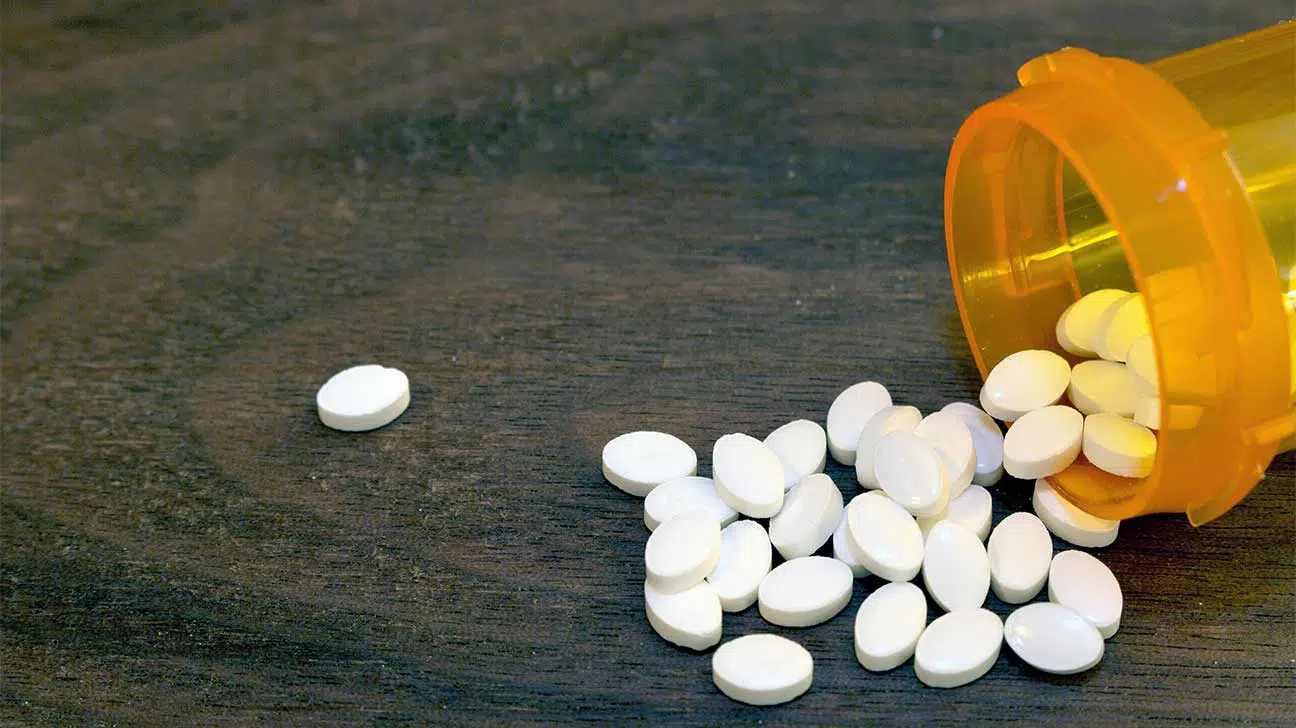
Thousands of teens and adults in the United States seek help for opioid abuse and addiction each year. For most, the first step in seeking help for addiction is undergoing detox.
Opioid detox is the first step toward addiction recovery for people who have become physically dependent on one or more drugs, including prescription and illicit opioids.
A detox program for opioid dependence can offer medical supervision, treatment for withdrawal, and may refer individuals for further treatment in a drug rehab program.
Find out more about detoxing from drugs and alcohol
Who Needs Opioid Detox?
Opioid detox is a necessary first step in the treatment process for people with opioid dependence, which can develop through chronic, regular use of one or more opioid drugs.
Signs of physical dependence include:
- having to take opioids frequently to avoid feeling physically sick
- having to increase the amount of opioids you take over time
- craving opioids throughout the day
- constantly thinking about using or getting more opioids
Detoxification, also known as detox, is a process of allowing opioids to leave the body. For people with opioid dependence, this can lead to symptoms of opioid withdrawal.
Opioid withdrawal can begin within hours of a person’s last use of an opioid drug and may feature symptoms that are mild to severe in nature.
What Types Of Opioid Drugs Require Detox?
Opioids are a class of prescription and illicit drugs known for their pain-relieving, or anesthetic, properties. They can help treat pain and cause euphoria in high doses.
Opioid drugs that may require detox include:
- heroin detox
- morphine detox
- codeine detox
- oxycodone (OxyContin or Percocet) detox
- hydrocodone (Vicodin or Norco) detox
- hydromorphone (Dilaudid) detox
- oxymorphone (Opana)
- meperidine (Demerol) detox
- tramadol detox
- fentanyl detox
- methadone
Opioid drugs are known by a number of generic and brand names, as well as street names—that is, the names they’re referred to when bought through drug dealers.
All opioid drugs can cause physical dependence in the body and can lead to similar physical and psychological symptoms of drug withdrawal.
Timeline For Opioid Detox
Opioid withdrawal can begin to set in within eight to 10 hours after a person’s last dose of a short-acting opioid, or up to 36 hours after use of a long-acting opioid like methadone.
How long withdrawal lasts can depend on:
- the type of opioid drug taken
- severity of physical dependence
- how long you’ve been taking opioids
- dose last taken
- use of other drugs (including alcohol)
- treatment provided for withdrawal
- other medical and mental health-related factors
Acute opioid withdrawal lasts seven to 14 days, on average. That is, up to 10 days for withdrawal from short-acting opioids, or as long as 14 to 20 days for methadone withdrawal.
Signs And Symptoms Of Opioid Detox
Early signs of opioid withdrawal can begin to set in shortly after someone has taken their last dose of an opioid drug. This will often resemble symptoms of a bad flu.
Early withdrawal symptoms may include:
- anxiety
- restlessness
- runny nose
- excessive yawning
- sweating
- difficulty sleeping
- goosebumps
- muscle and bone pain
Within the first few days of withdrawal, additional symptoms may continue to emerge, as the body reacts and begins to recover from the lack of opioids in its system.
Late withdrawal symptoms may include:
- nausea
- vomiting
- stomach pain
- diarrhea
- chills
- drug cravings
- hot and cold flashes
- dilated pupils
- pounding heart
Opioid withdrawal symptoms reach their peak about three days after a person’s last dose. After this, most physical symptoms will begin to slowly decline and go away.
Post-Acute Withdrawal Syndrome
After acute withdrawal from opioids, some people may continue to experience symptoms of withdrawal for weeks or months after they’ve stopped taking opioids.
This can be a sign of what’s known as post-acute withdrawal syndrome (PAWS), also known as protracted withdrawal.
The most common signs of this are lingering depression, anxiety, cravings for opioids, and difficulty sleeping (insomnia).
Risks And Dangers Of Opioid Detox
Opioid withdrawal can be very uncomfortable. Without clinical support, this could result in a person relapsing to their opioid use, to stave off withdrawal.
Detoxing at home, for instance, is strongly discouraged for people with opioid dependence, due to potential health dangers and an inability to manage medical complications should they arise.
Dangers of opioid detox include:
- severe dehydration: This can occur through excessive vomiting, diarrhea, and inadequate intake of fluids during withdrawal.
- drug relapse: Relapsing back into drug use can return people to a vicious cycle of wanting to get off opioids but feeling unable to.
- overdose: Detoxing from opioids carries a risk for overdose, due to the fact that detoxing reduces a person’s tolerance for opioid drugs.
The safest way to stop using opioids and overcome an addiction is to seek professional help through a detox facility or an inpatient treatment center that offers detox services.
Opioid Detox Programs
The safest way to detox from opioids is to enter a medical detox program. This can offer 24-hour access to clinical support, medical supervision, and medicine for withdrawal.
Alternatively, an outpatient detox program or social detox program may also be available, if an individual is unable to access an inpatient detox program.
What opioid detox programs can offer:
- medical supervision
- a quiet and safe environment to detox
- treatment for opioid withdrawal
- treatment referrals for follow-up drug rehab
Opioid Detox FAQs
Find answers to frequently asked questions about opioid detox and withdrawal.
❓ How Long Do Opioid Detox Programs Last?
✔️ An inpatient detox program can last anywhere from seven to 14 days, on average. This may vary depending on the detox facility, or the setting in which you are detoxing.
❓ Can You Detox From Opioids At Home?
✔️ At-home detox is possible, but it’s not recommended. Detoxing from home is notoriously difficult and can also be dangerous. It’s best to seek professional medical support.
❓ Can Opiate Withdrawal Symptoms Last For Months?
✔️ Some symptoms of opioid withdrawal, such as insomnia, anxiety, and changes in mood can last for weeks or potentially months after your last use of an opioid drug.
This is known as protracted withdrawal and can be treated through a combination of behavioral therapy, medication for opioid use disorder, and other support services.
❓ What Medications Are Used For Opiate Withdrawal?
✔️ Some detox facilities may offer medication to either prevent opioid withdrawal or treat symptoms of opioid withdrawal to help ease discomfort during this process.
Medications that are FDA-approved for treating opioid withdrawal:
- methadone: a long-acting opioid drug that can prevent opioid withdrawal and be taken long-term as a maintenance medication.
- buprenorphine: a partial opioid agonist that can help relieve withdrawal when taken at least 24 to 36 hours after a person’s last opioid use.
- clonidine: a medication that can help relieve flu-like symptoms of withdrawal, such as nausea, pain, runny nose, and high blood pressure.
Additional medications, such as lofexidine, may also be given as needed to relieve symptoms such as diarrhea, nausea, vomiting, and pain during opiate withdrawal.
Call Today To Find An Opioid Detox Program
Finding a detox program is just the first step. If you’re looking for treatment for yourself or a loved one who’s addicted to opioids, we can help you find a rehab program that’s right for you.
Call our helpline now to find opioid detoxification and substance abuse treatment options at a treatment center near you.
Addiction Resource aims to provide only the most current, accurate information in regards to addiction and addiction treatment, which means we only reference the most credible sources available.
These include peer-reviewed journals, government entities and academic institutions, and leaders in addiction healthcare and advocacy. Learn more about how we safeguard our content by viewing our editorial policy.
- U.S. National Institute on Drug Abuse (NIDA) — Medications for Opioid Overdose, Withdrawal, & Addiction
https://www.drugabuse.gov/drug-topics/trends-statistics/infographics/medications-opioid-overdose-withdrawal-addiction - U.S. National Library of Medicine: MedlinePlus — Opiate and opioid withdrawal
https://medlineplus.gov/ency/article/000949.htm - U.S. National Library of Medicine: NCBI Bookshelf — Clinical Guidelines for Withdrawal Management and Treatment of Drug Dependence in Closed Settings
https://www.ncbi.nlm.nih.gov/books/NBK310654/ - U.S. National Library of Medicine: NCBI Bookshelf — Opioid Withdrawal StatPearls
https://www.ncbi.nlm.nih.gov/books/NBK526012/


